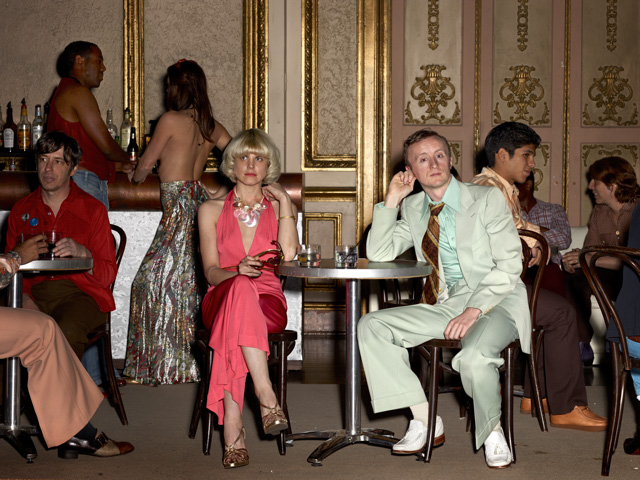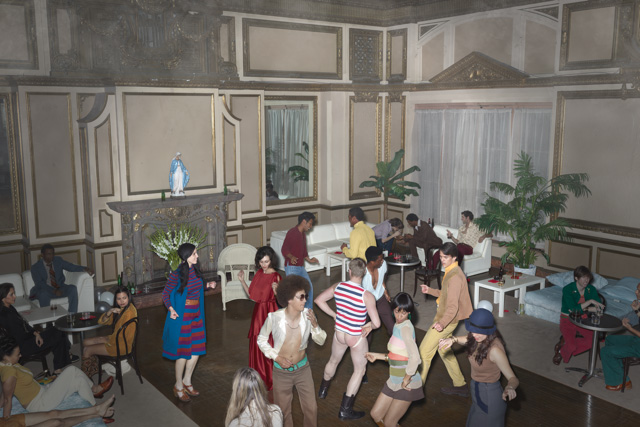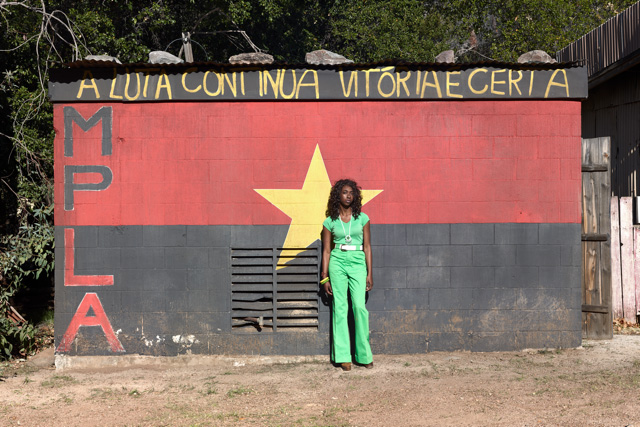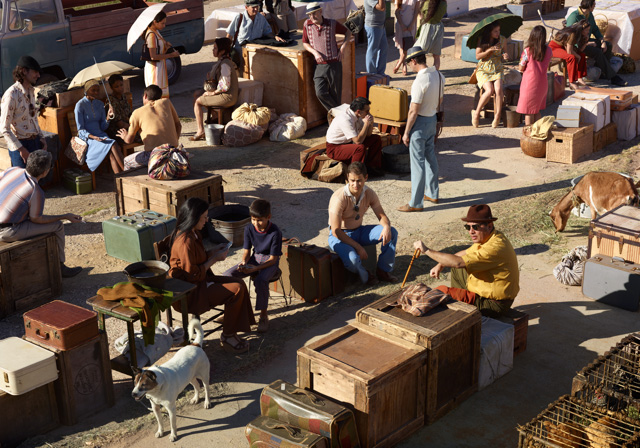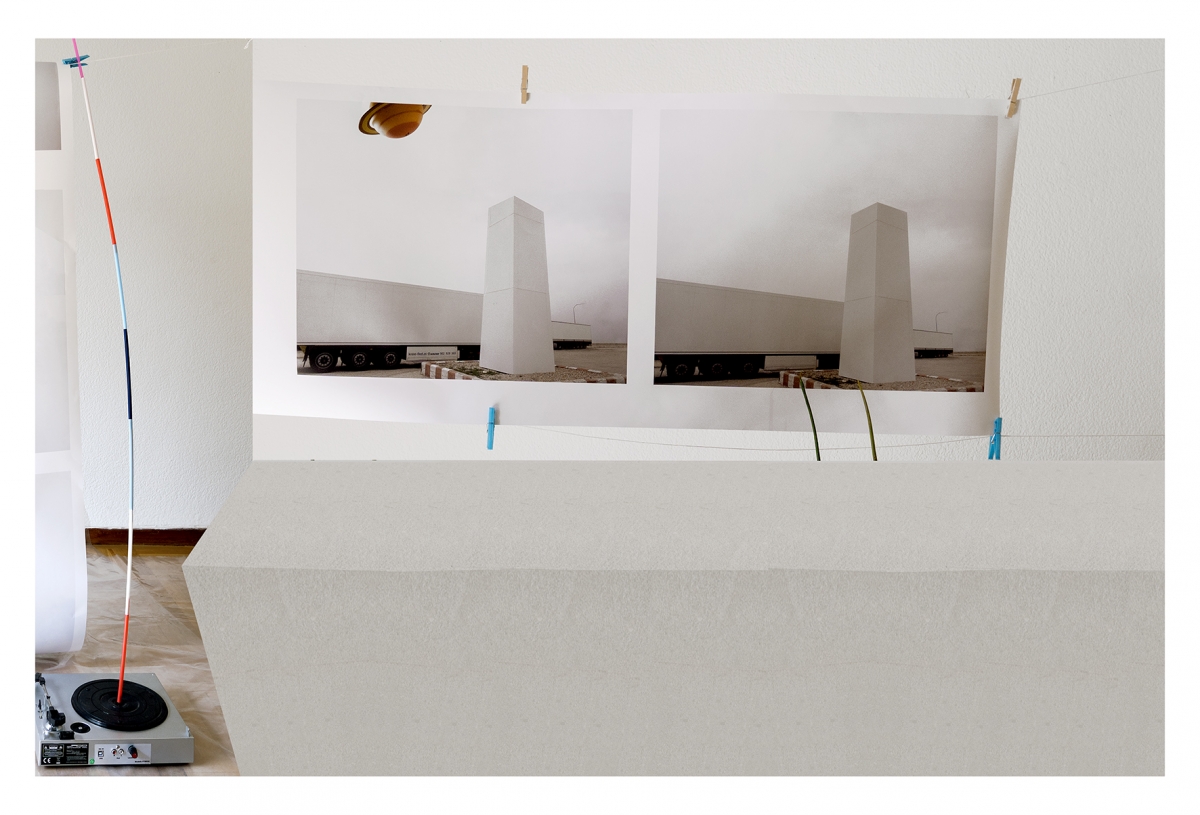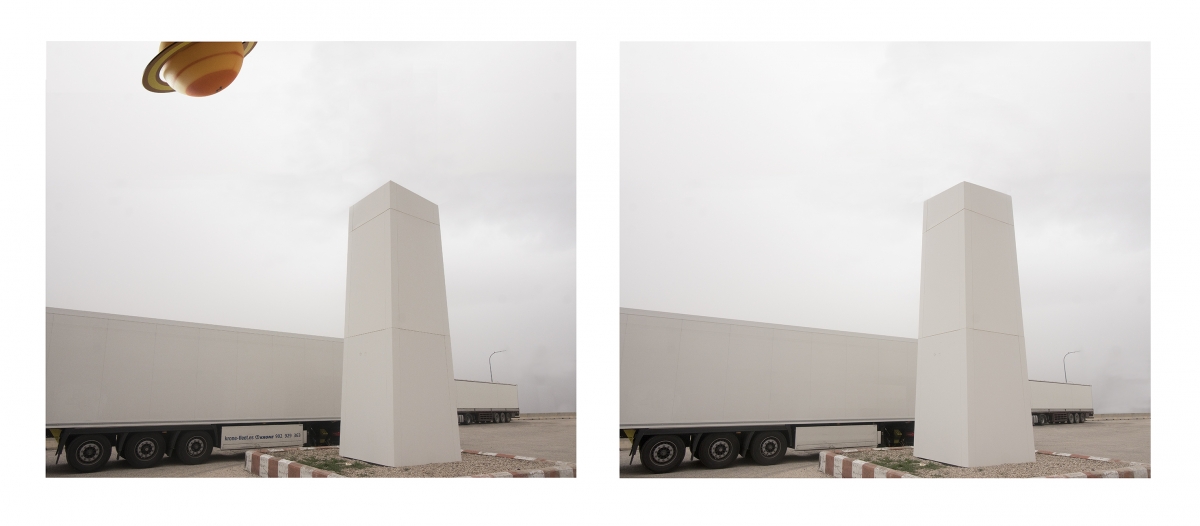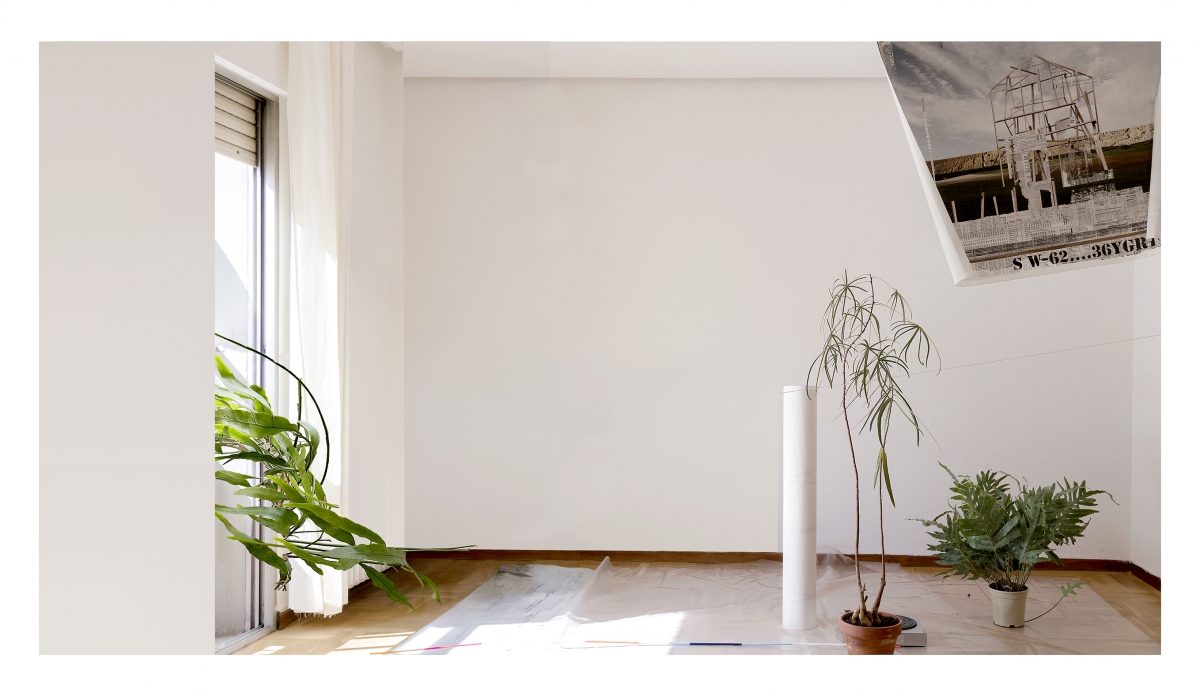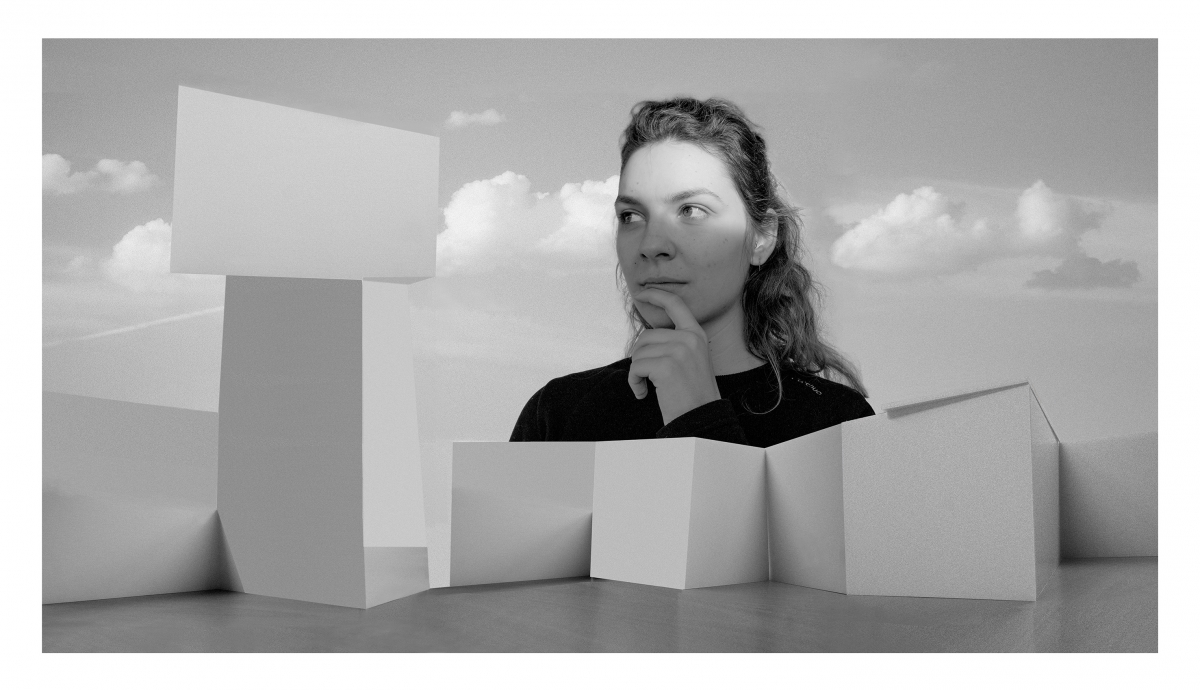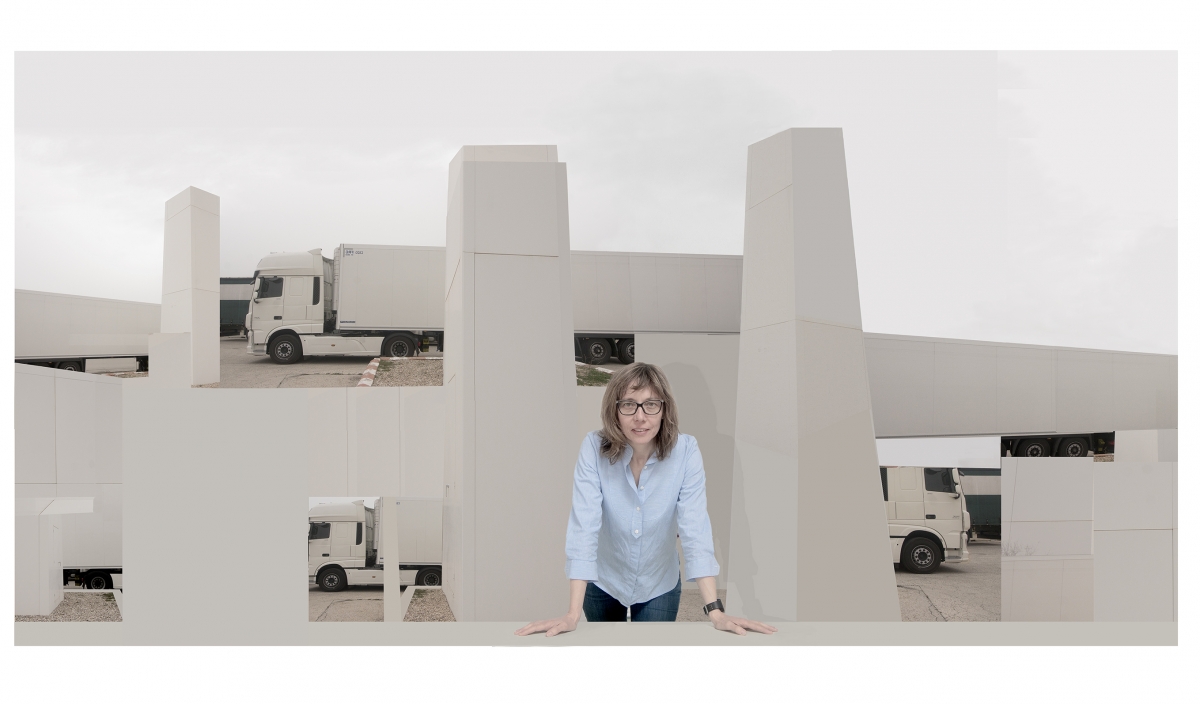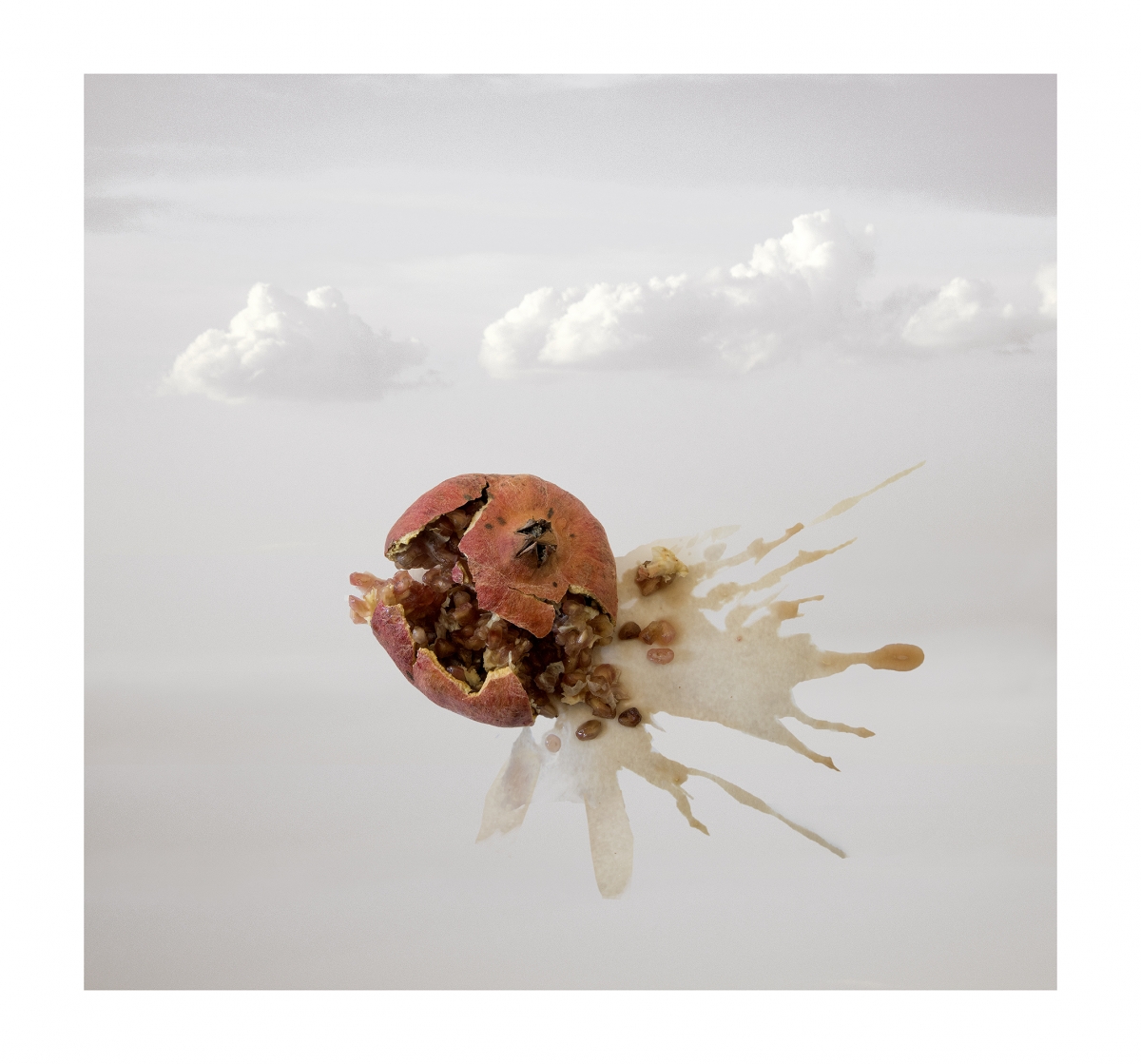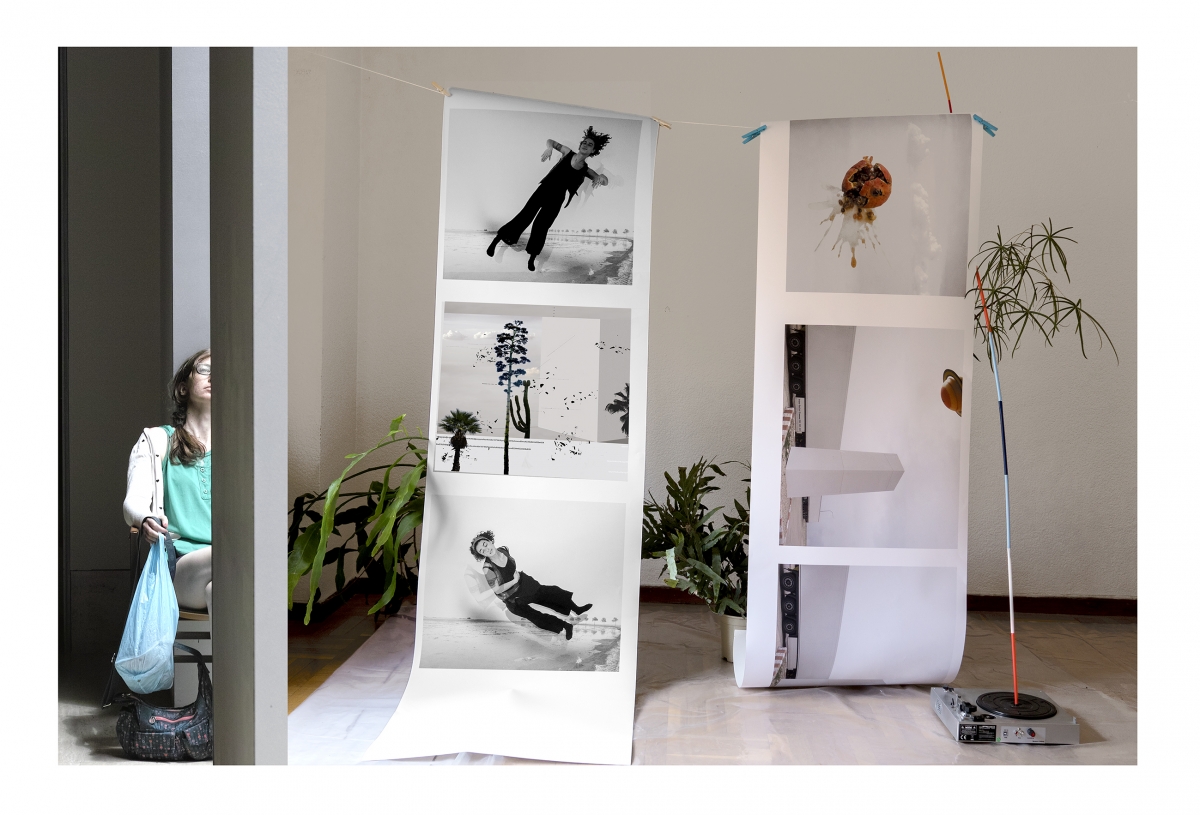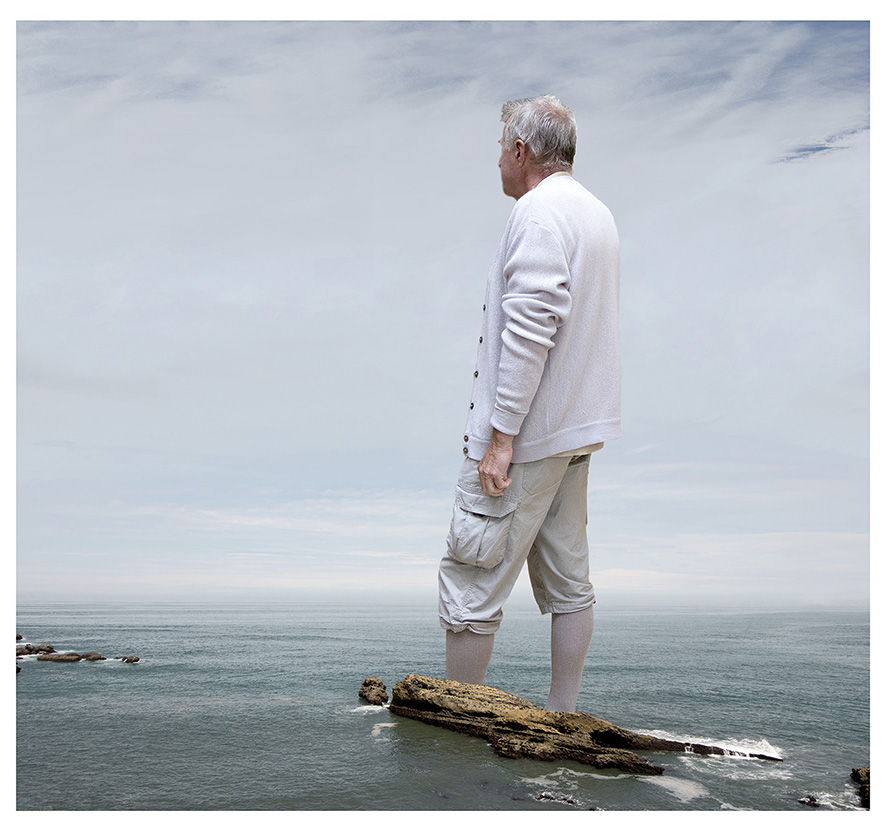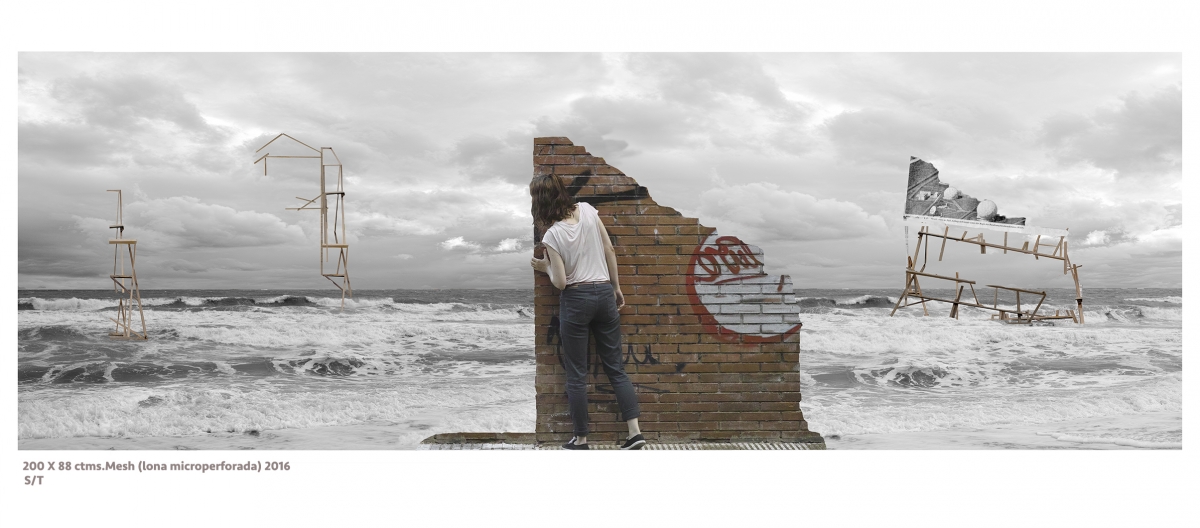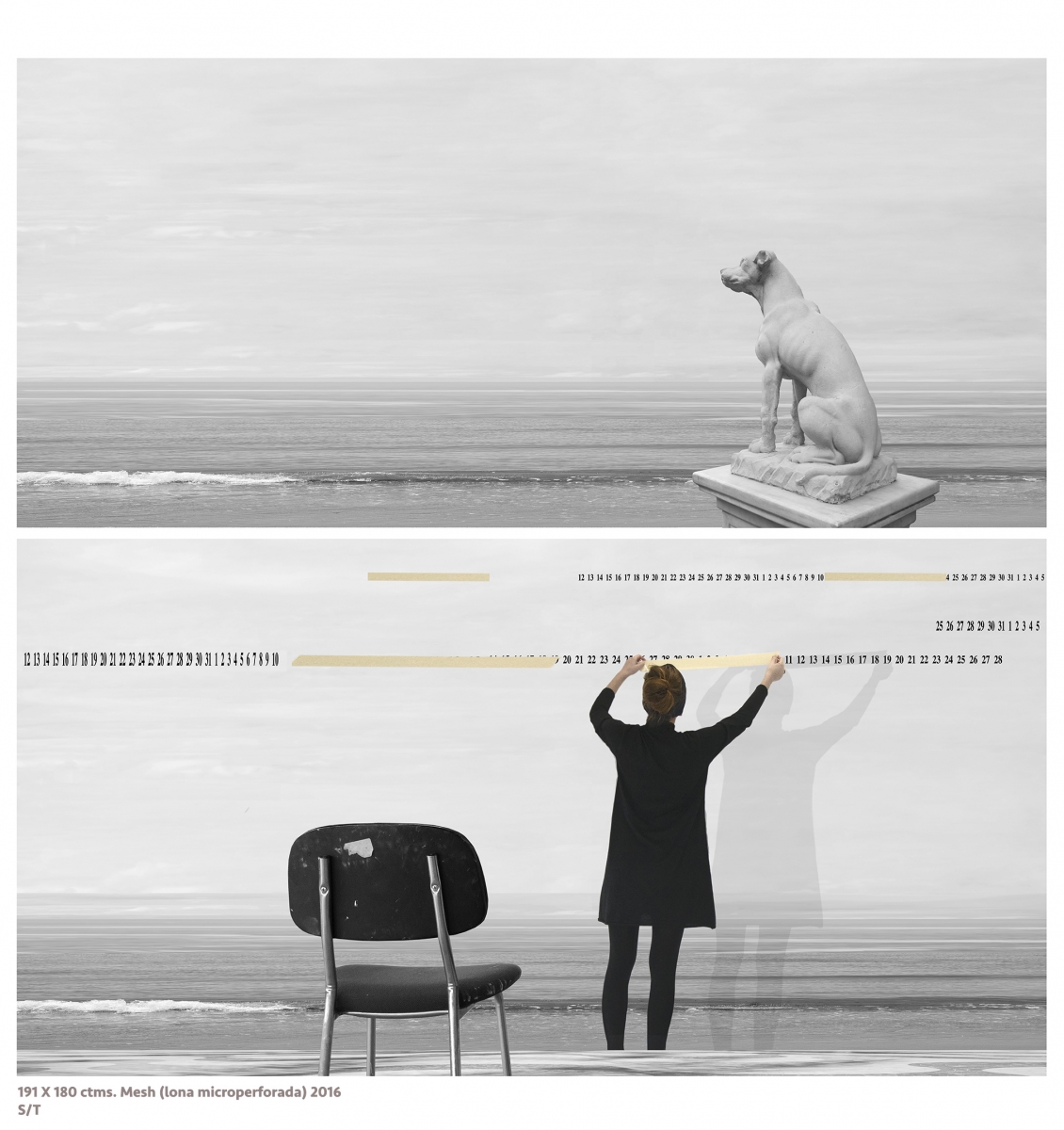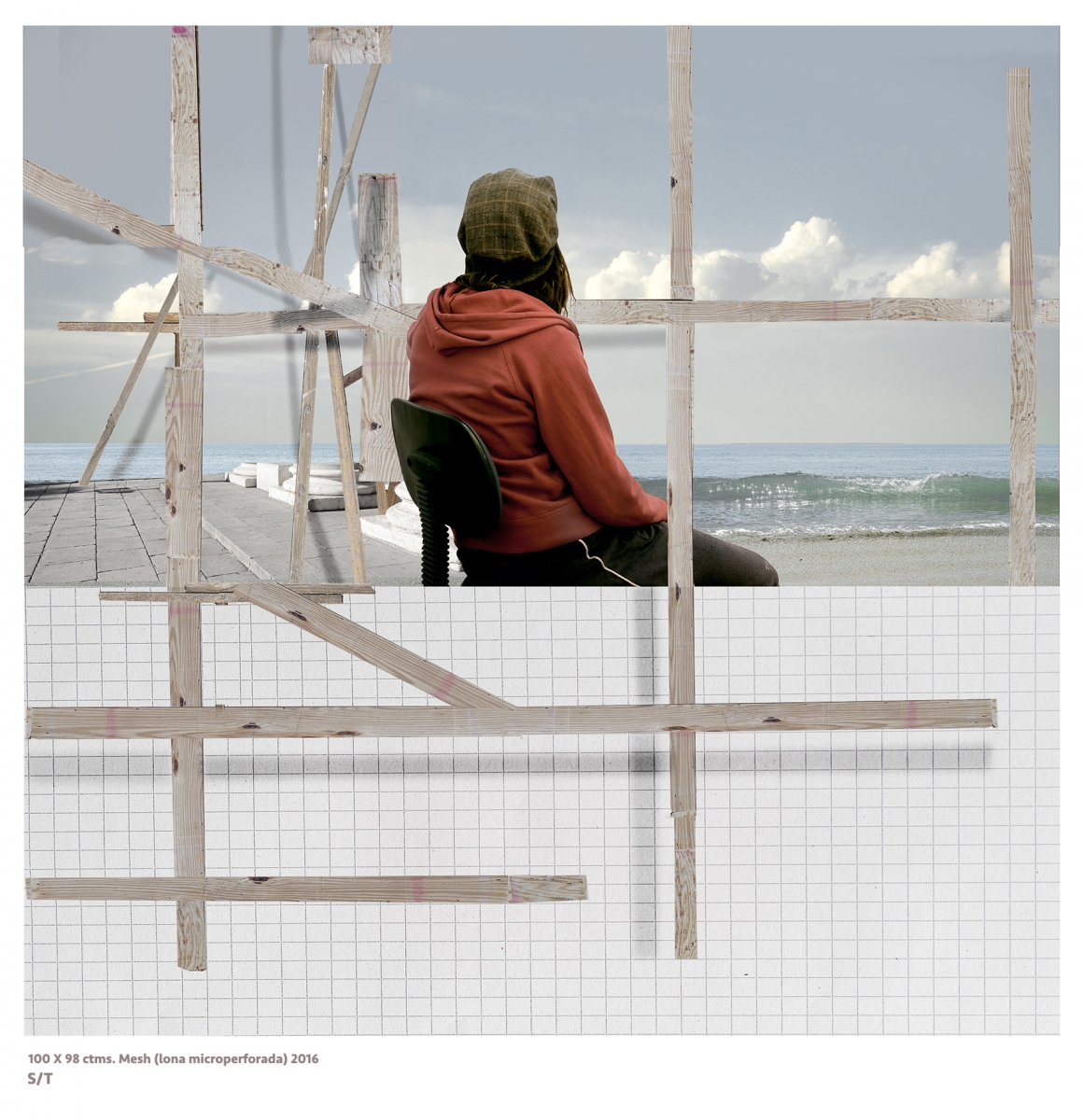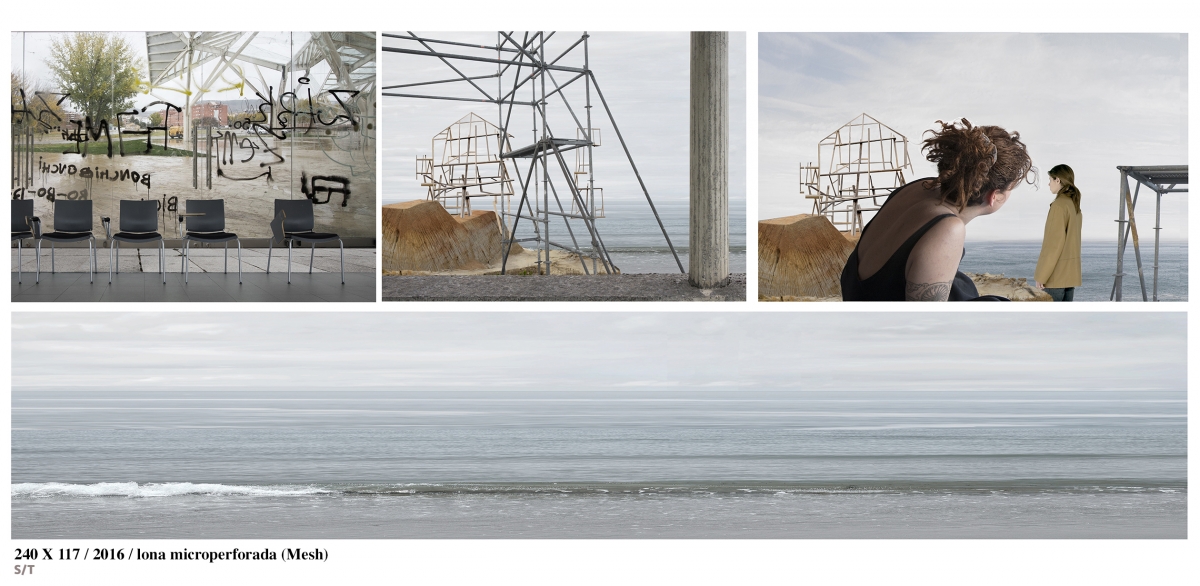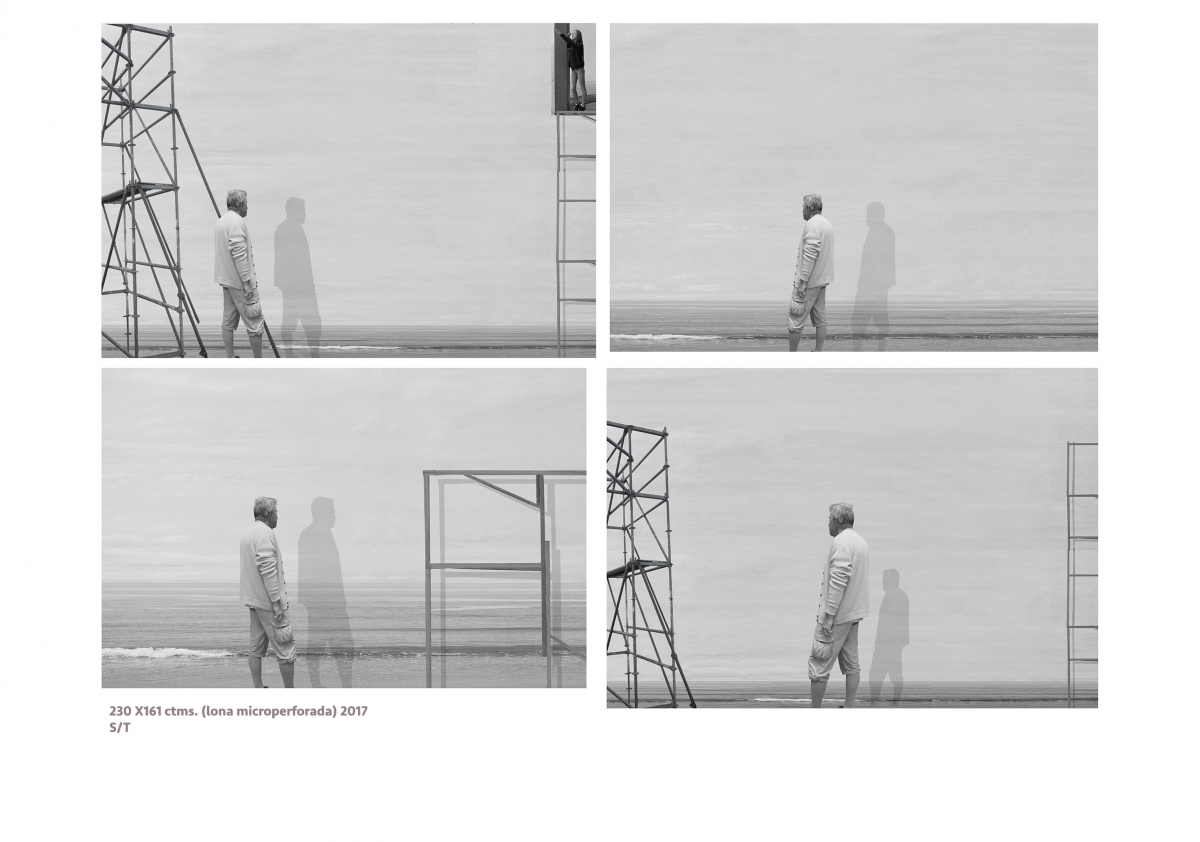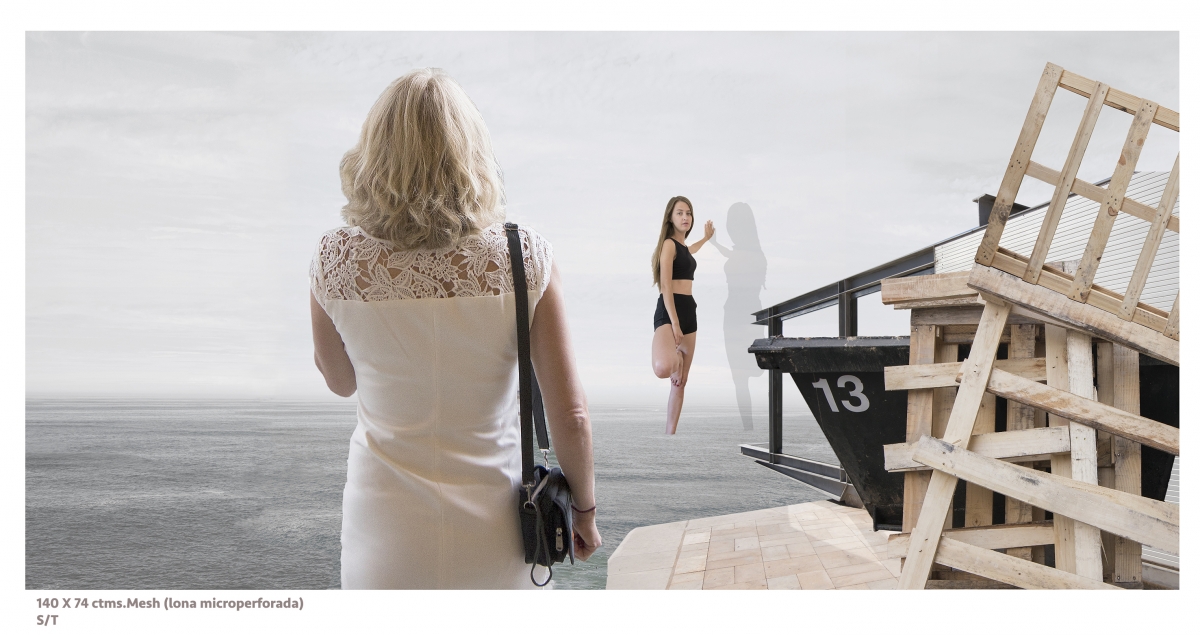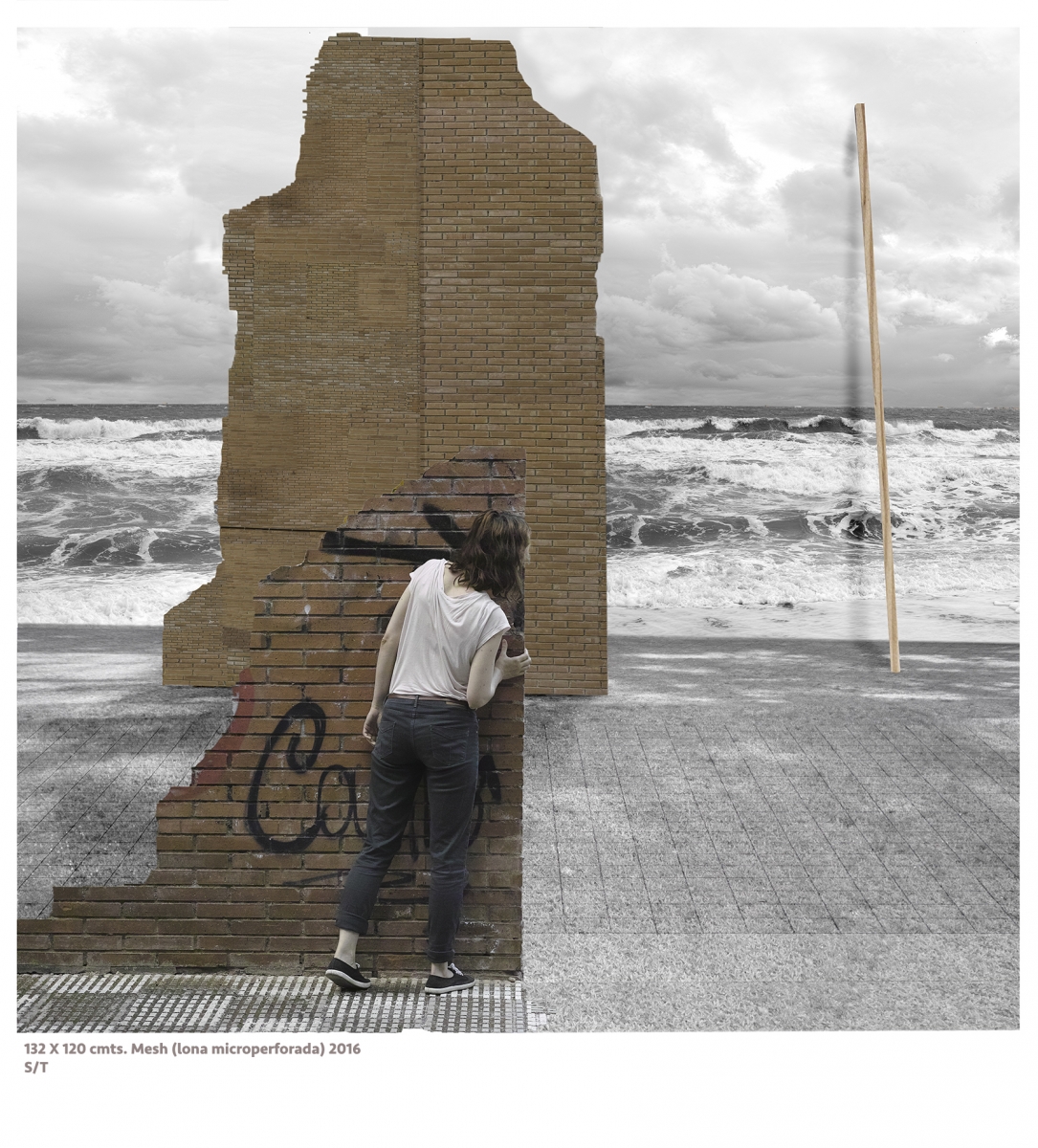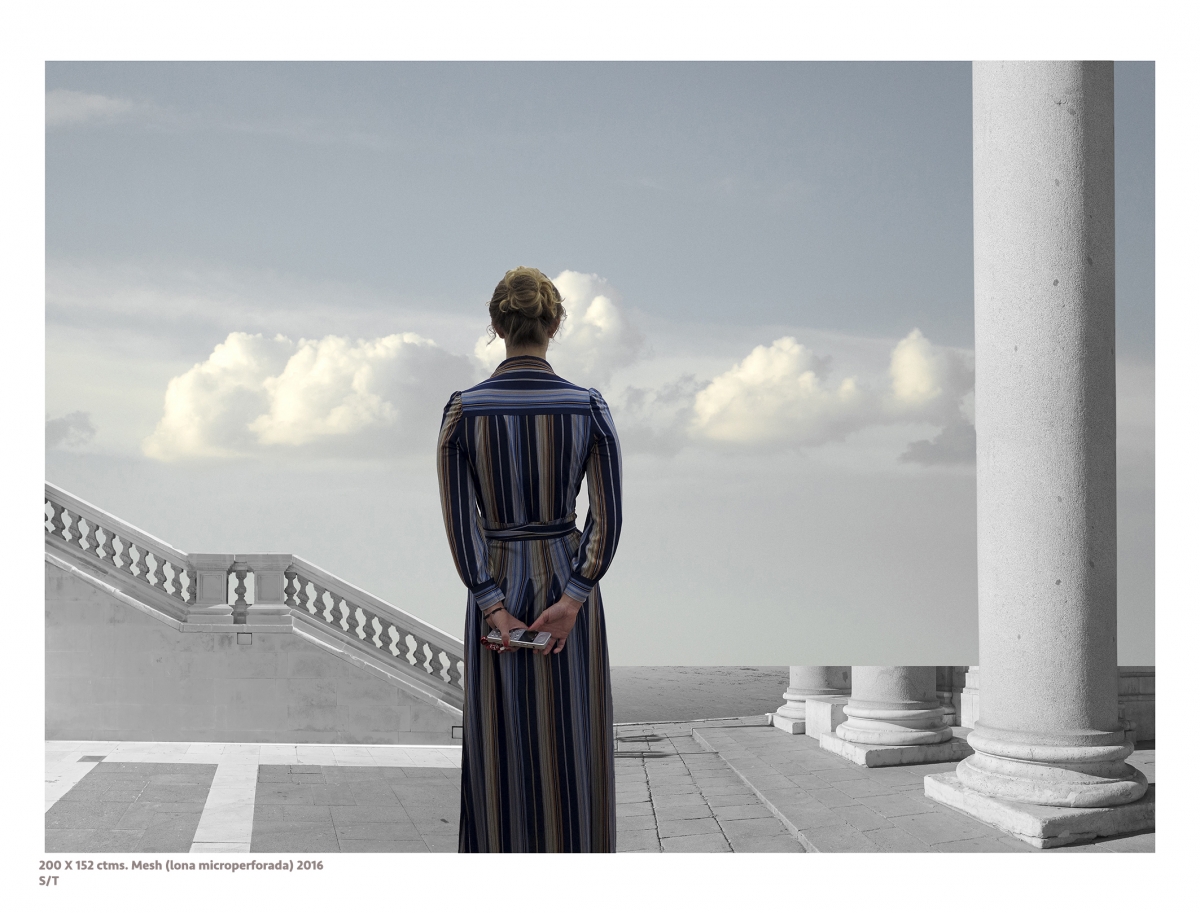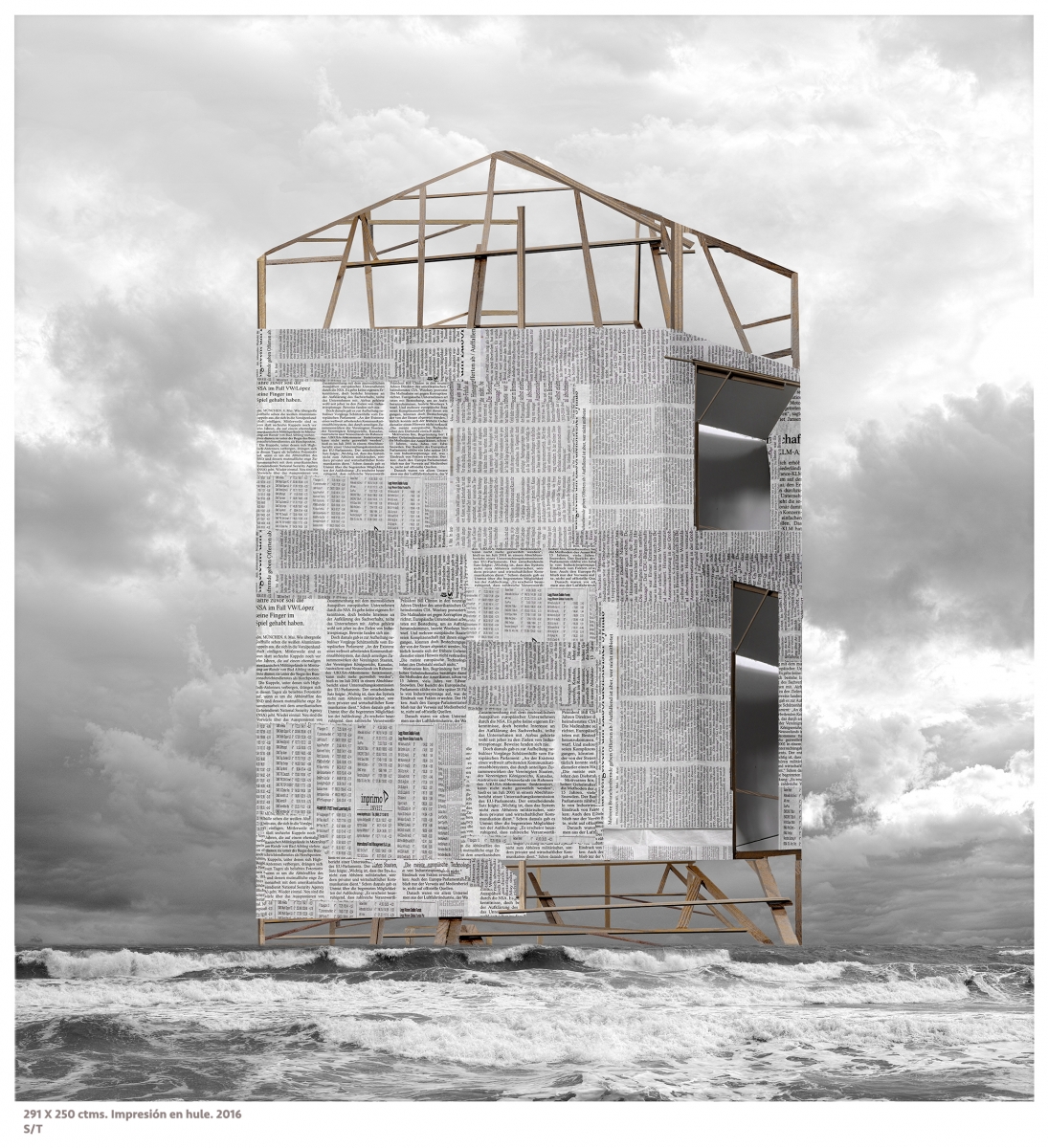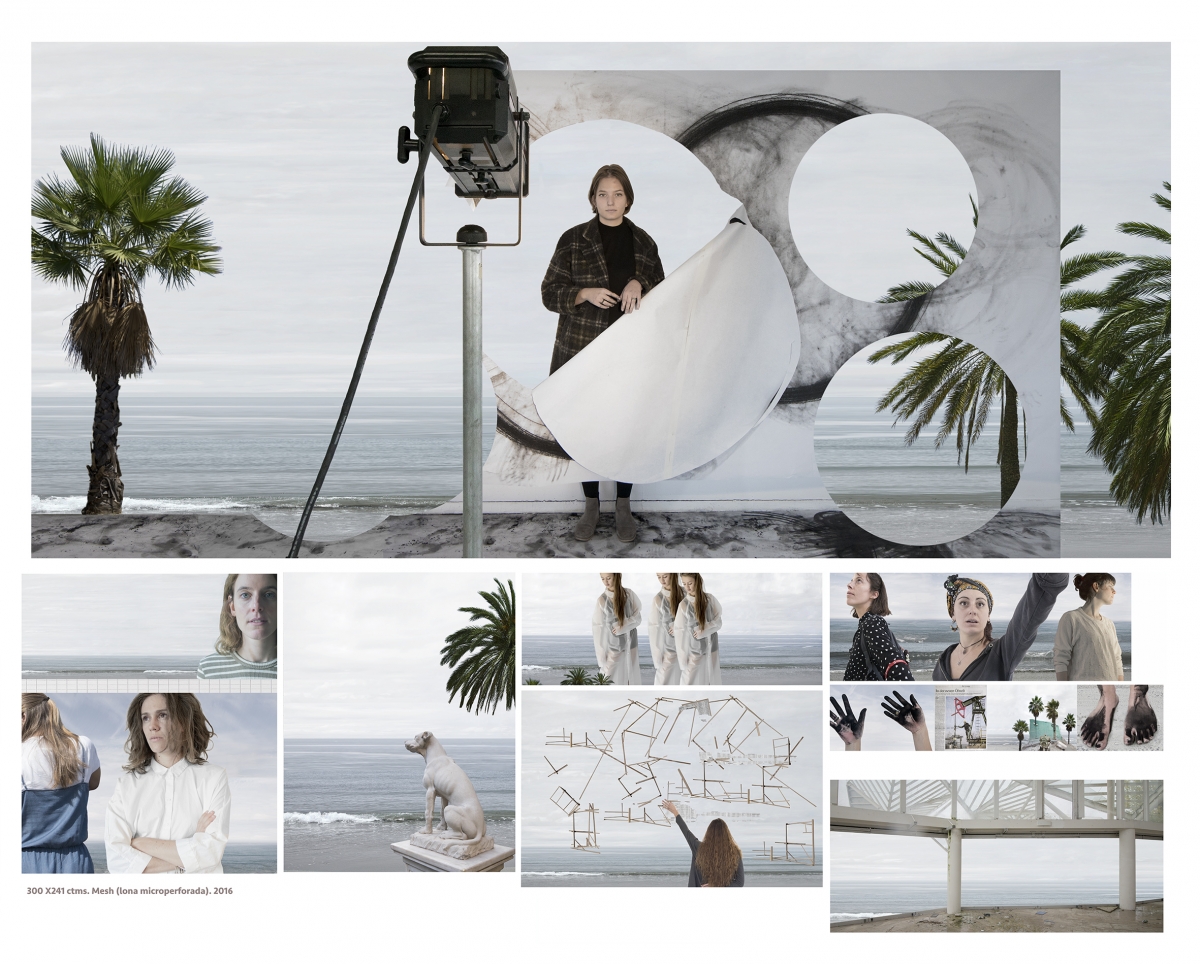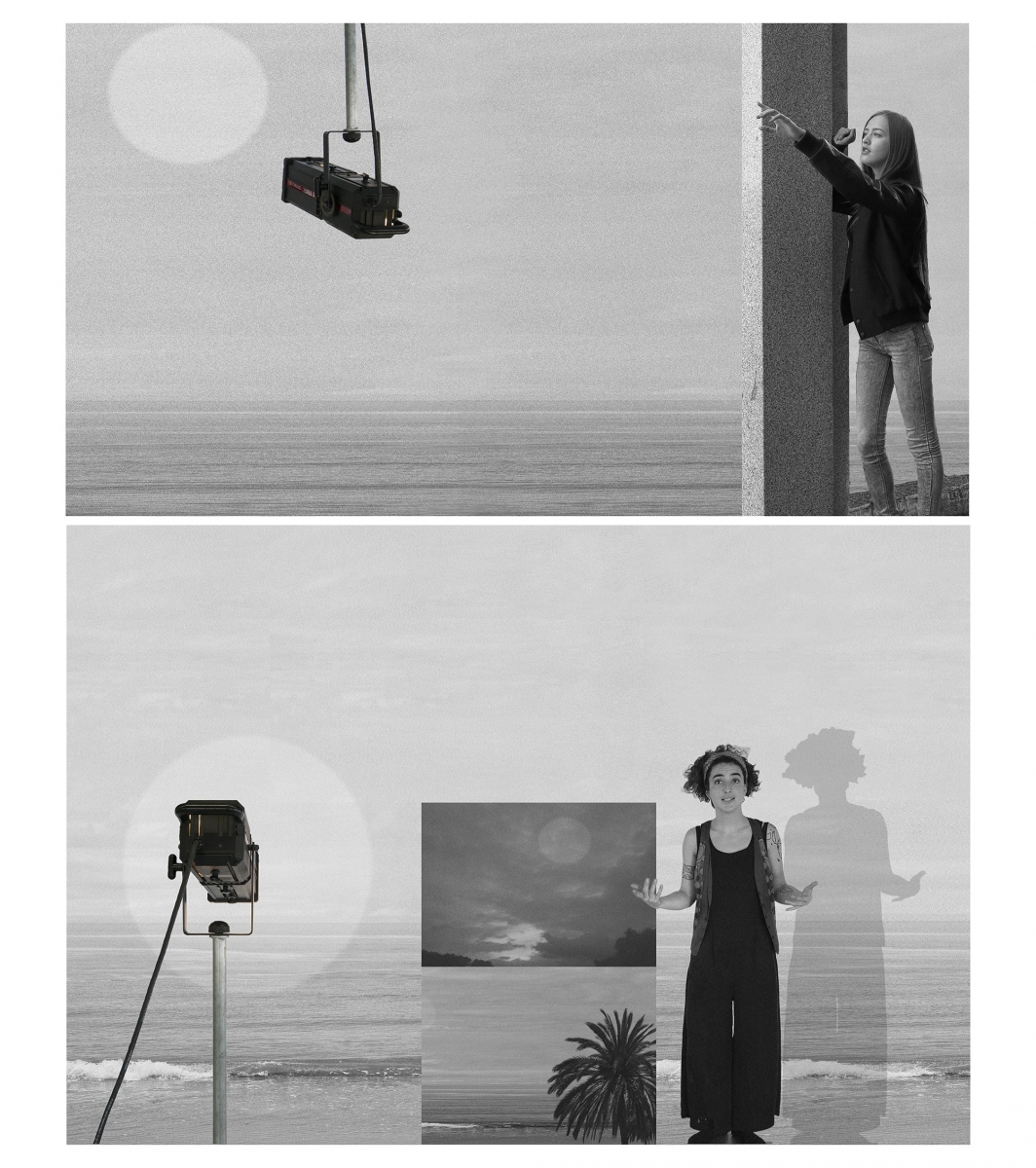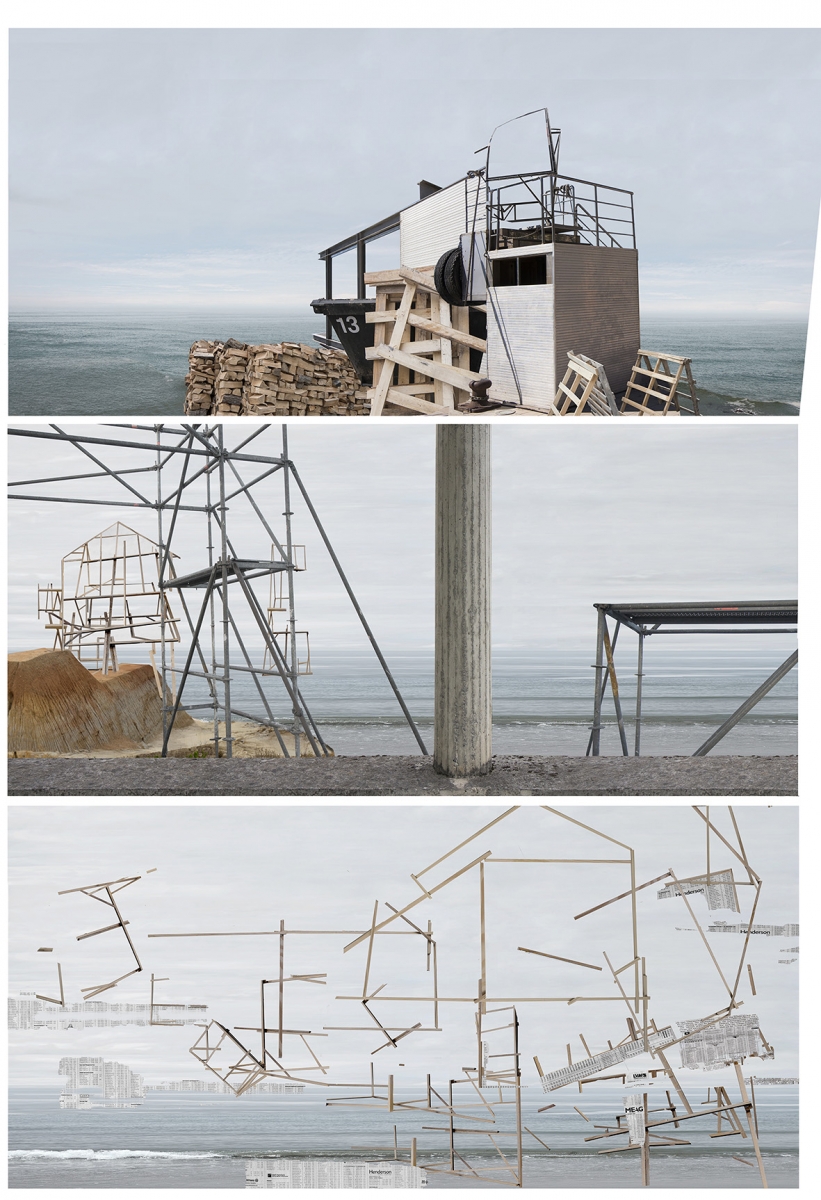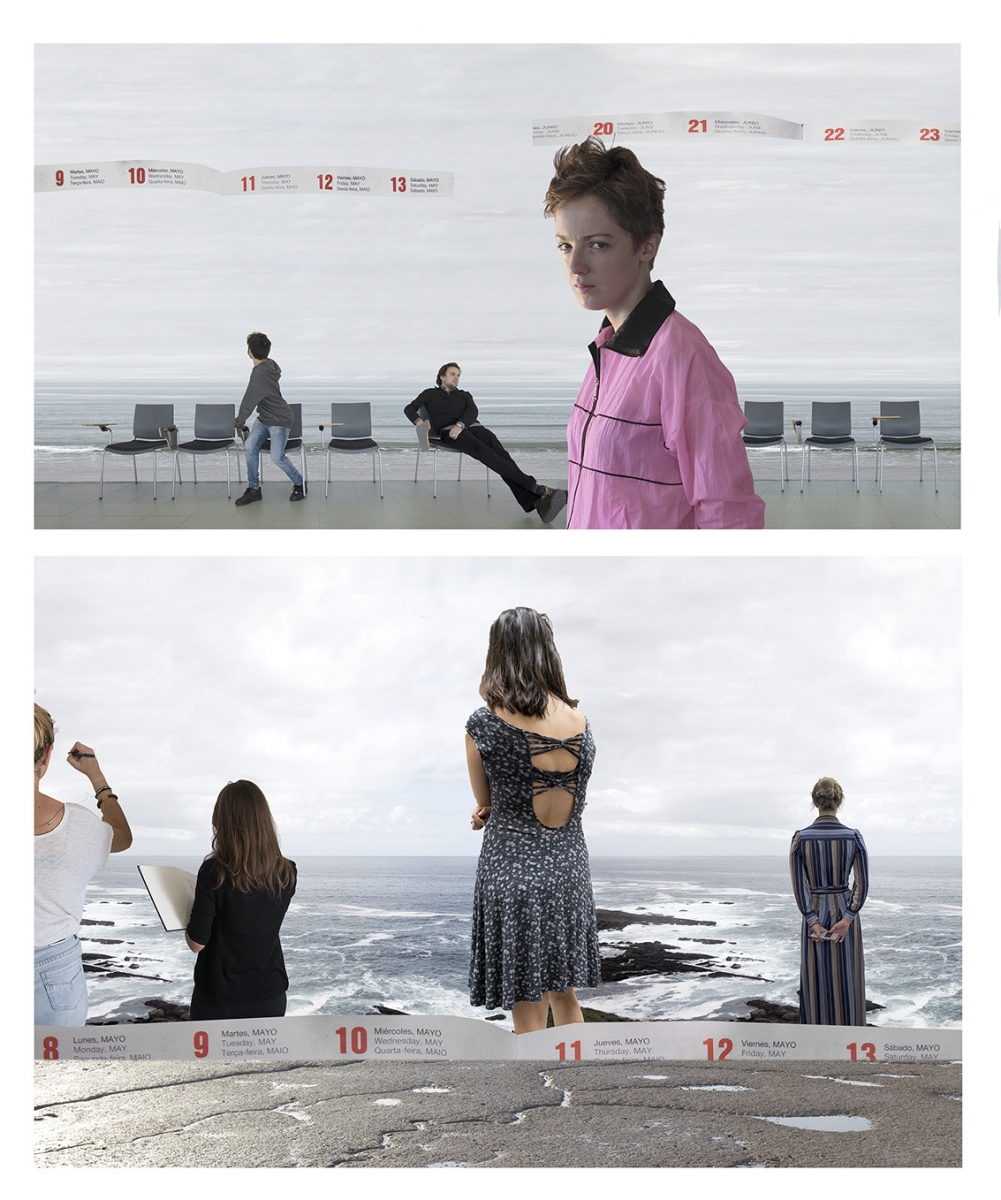*
Mieke Bal, University of Amsterdam, Netherlands
Clock Work
Is Christian Marclay’s 2010 video installation The Clock with its duration of 24 hours, an instance of Bergsonian duration, a Deleuzian “time image”, a time machine of sorts, or does it propose another relationship to time? It is obviously “about” clocks, but how is it “about” time – addressing the complexities of our current thinking about time and the image? Margot Bouman’s in-depth article on the intricacies between what she calls, after Bourriaud (2010), “postproduction aesthetics” and everyday life considers the curatorial act the work performs. (2014) And although she writes extensively about what can be called duration fatigue, the ambivalent responses people express after the intense and long confrontation with time as such, duration itself is not discussed, and neither Bergson nor Deleuze appear in her references. The idea of a time machine, according to Jarry or not, is also absent from the excellent article. So, why would I bring these conceptions of time up, if, at least according to the critic in question, they are not relevant for Marclay’s work? Well, because that negative answer is remarkable, and can perhaps help us to get a clearer sense of both Marclay’s masterpiece and the notion of time.
I have not been able to see the full 24 hours of The Clock, but enough hours of it to be able to see that Bouman rightly ignored the three possible invocations of theories of time. While The Clock is constantly, sometimes nerve-wreckingly alerting us to the passage of time, it is the opposite of durational. You can spend as much time in the work as you like, and it neither stretches nor compresses time. Instead, it is both continuous and hectic. Through a miraculously smooth editing, the artist manages to suggest continuity between clips, and thus would seem to heal the cuts of the montage and soften the spatialisation of time that time reckoning inevitably entails. Bergson’s insistence on continuous duration was a protest against just such spatialisation. But Marclay’s video does all that wonderful transition work while simultaneously highlighting the ticking of the clock. He seems to attempt, that is, to reconcile clock time with Bergsonian duration. But in the end, he does that only to foreground the intractable, relentless domination of clock time. So far, however, I am merely talking about what the work is “about”.
What is at stake, in thinking about time, is much more than the thematic obsession of the work. Marclay deploys a cinematic aesthetic in his terrific editing together of incongruously arbitrary sequences of clips. His master trick – of making the clocks in the clips coincide with real time – creates an opposition that through its very focus on the clock, questions it. He opposes, that is, the cinematic experience to the everyday aesthetic from which the former temporarily relieves us. This opposition complements the clock-duration antagonism with an awareness that begins to notice the social importance of recognizing the tyranny of clock time. As a cinematic dispositif, the work “discusses” the clock, but not in opposition to duration.
Time Tensions
I will return to Marclay’s work – already a classic, barely four years after its launch – later on. For now, I want to put the double opposition to conceptual use. The opposition between time and its spatialisation is foregrounded in the presentation of The Clock as an installation, not a theatre film. That tension between cinematic aesthetic and everyday experience shifts the cinematic experience as well as the experience of art in galleries from the autonomist suspension of reality to a constant interaction between the two. It is within that interaction that the question of the social importance of the tyranny of clock time and the tensions inherent in it can be considered in more depth. This helps us to get a bit closer to grasping what an image is and does, and how it relates to time.[1]
This understanding is necessary because those tensions are what compels society, including many philosophers, to adhere to clock time, or at least, to borrow from it the naturalization of the divisibility of time. What makes The Clock so important is that it is supersedes the opposition, not denying it or taking sides but bringing clock time to the centre, then forcing the viewers to acknowledge its power and yet, simultaneously, stay with the cinematic dream of manipulatable time, in a sampling of fictional moments. The viewer who, every now and then, looks at her watch to check if the film is not cheating, is put in the middle of experiential time and thrown out of the cinematic cushioning time. And thanks to the integration of the two, that experiential time is, precisely, made to be felt in tension with clock time. Those tensions are constantly impacting on our lives. For time is not homogeneous in our experience. Because we are so frequently multi-tasking, we are also multi-temporalising: simultaneously living different paces in the same stretch of clock time. I term this multi-paced experience heterochrony. (2011)
Heterochrony can be seen most clearly when we examine the relationships to time in migratory culture. The concept of heterochrony helps account for the experiential differences facing, or being ruled by clock time, and brought it to bear on “migratory aesthetics”. With the qualifier “migratory” I refer not to the culture of migrants but to the shared culture within which migrants have a normal place. For millennia, but quite drastically more recently, cultures have changed under the impact of migration, and the merger that results is a migratory culture – much enriched, by the way, including aesthetically; hence the phrase “migratory aesthetics”. It is within such a culture – and few cultures in the world, at this point in time, are not “migratory” – that heterochrony becomes more visible, or otherwise sensorially present. When standing in line at the registrar of a supermarket, we seem to be all equals, at least in terms of “being in time”. But the homemaker who has children waiting, perhaps prone to mischief, will be more impatient than the student who is chatting on his mobile with a mate.[2]
Once we realize such differences in experiencing time, a little thought experiment as an exercise in migratory-cultural awareness could be to imagine being a migrant standing in that same line, who is waiting for months to hear about his residency, hence, also work permit. Meanwhile, his family back home is waiting for money – making money was the justification of his painful departure. For such a person the wait becomes oppressive – an enforced waste of time. But heterochrony gets more complex, or dense, when such a migrant has also been used, in the home country, to hanging about the village, unemployed, with all the time in the world on his hands. Then, forced into clandestine labour by the slowness of bureaucracy in the host country, suddenly every minute counts to make the hours necessary to even begin to support his own everyday life. Waiting in line at the supermarket becomes a double negative. Such a person experiences time in both durational and clock aspects, at the same time, and in tension with one another, as well as in fierce competition, with clock time winning – on penalty of death.
In light of this insight, the homemaker in the supermarket line can be understood as experiencing clock time: while wasting said time standing on already tired feet, she knows her son must be driven to a music lesson, the baby soon needs feeding, and the anxiety of not making these two urgent tasks in time makes the wait seem longer than it really is, perhaps. What such a person sees, while standing there, is not the same as what other fellow waiters perceive. Heterochrony is decisive in our experiencing of time, and no homogenised clock can regulate that away. I contend that understanding images must take this into account.
Against the background of a heterochrony that, by its very nature, is multiple and cannot be equalized, I propose to consider how an image relates to time, what difference a moving image makes in that relationship, and what space, the matter of video installation, imports into the knot of image and time. Although film is also spatially situated, video installation as a form of exhibition is primarily defined as spatial. I will argue that the successful display of video installations foregrounds, indeed, “theorises” the fundamental temporality of images, including allegedly still images. In so doing, this art form enables reflection on, and subsequently, the development of strategies for, the struggle against the tyranny of clock time. In this sense, video installation is a time machine; not quite the one for “exploring” time, as Jarry imagines, but for shifting priorities in experiencing time socially[3].
Image Acts
Time is a timely topic so to speak, and many art scholars write about it. From the image in time, drawing the discussion back to contextualization, to the temporality of images, including but not exclusively, the moving images of film and video, time is currently being considered in its many aspects and manifestations. We can think of sequential ordering, duration, rhythm, memory, uncertainty and undecidability, affect and suspense, to name but a few, and the kinds of time the combinations of these aspects entail, such as deep time, geological time, narrative time, and many more. Many scholars, also, bring these considerations of time to bear on the capitalist time we are submersed in; I abbreviate, and generalise that notion to clock time, but conversely, it is useful to remember that clock time, dating from the colonisation period, is fundamentally in the interest of capitalism. A remarkable recent contribution by Sven Lütticken brings many threads of these efforts together. (2013) But not only scholars explore time in art; artists themselves do so in depth and creative research. So does, for example, William Kentridge’s 2012 opera Refuse the Hour, which is a brilliant artistic reflection on time and specifically its anchoring in colonialism, as well as the video installation version, The Refusal of Time. That focus on colonialism, of course, makes an excellent contribution to the thought experiment suggested above. Kentridge’s opera, with its fast-paced music, singing, and dancing, the slowly declaiming lecturer (Kentridge himself), the video projections on several screens and the odd instruments, is as fundamentally about heterochrony as Marclay’s work is about multiple experiences of clock time. [4]
To understand the way images are in time, Bergson’s conception of the image is my favourite. Neither Bergson nor Deleuze whose work on cinema (1986; 1989) is anchored in Bergson’s work – primarily his 1896 Matter and Memory – give a definition of either duration or the image. And while Deleuze’s exegesis of Bergson’s work, published in 1966 as Le Bergsonisme (1988) clarifies key points, definitions remain lacking. Rather than deploring this, I applaud the absence of reifying, fixating definitions of concepts. As I have argued in a different context, (2002) also inspired by Deleuze, concepts travel, through time, space, and disciplines, and fixating them in definition denies of precludes such journeys, forcing the concepts to return unchanged to their point of origin.
Instead, Bergson’s work encourages an imaginative understanding of his ideas and concepts. Given the high level of abstraction in Bergson’s texts and the high degree of difficulty of Deleuze’s, I propose an utterly simple way of imagining what the philosophers mean in relation to our interest, here, in time as something to be explored by a machine, considered as a construction, or as the element of social life I suggest with my term “heterochrony”. Matter and Memory is subtitled as an “essay on the relationship between body and mind”. But instead of either matter or memory or both, mind or body or both, all chapters have the (undefined) word “image” in their titles. As it turns out, the body is the central image in the processes Bergson analyses. The book is entirely subject-centred.
As a prelude to my simplified account, imagine a vertical line, representing time, which meets a horizontal line, representing space. At the point of meeting is the subject in the act of perceiving. A point: nothing; no time, no space. But potentially, movement in both directions – past, when the present perception touches memories; and future, toward which the perception inclines. And something similar on the space line: also movement, of images-candidates to be seen. So far, it all seems utterly simple and clear. Now, imagine both lines to extend and expand and become fields, filled with a great variety of images. Suddenly it is not so simple anymore. The time line transforms into a wild, rocky landscape of heterochrony. The space line becomes a field where all kinds of things move to get the attention of the subject. No wonder the subject must be selective.
Indeed, selection is the key to live in such chaos. Bergson’s book starts with the thesis that perception is not a construction but a selection. The subject makes a selection from amongst all possible things to see in the material world around her. She does this in view of her own interests, including bodily interest. This simple idea has transformed contemporary thinking on representation, which for a long time was bound to an opposition between mimesis (seen as imitation) and construction. Perception, in Bergson’s radically different view, is an act of the body and for the body. The act of perception occurs in the present – a moment in time that occurs in, but has itself no duration. The meeting point of the two lines indicates the present. The result of the act is an image, based on the similarly restricted spatial selection. We can, therefore, as well speak of image acts. The question is, how the rigorously continuous duration – past and future – and the rest of the space surrounding the selected bit participate in the image.
Time-wise, this is where memory comes in. While occurring in the present, perception is bound to memory. A perception image that is not infused with memory images is impossible to understand. The subject would “do” the image but not be able to make sense of it, and thus make it work for her own interests. At the end of the book, Bergson writes:
In concrete perception memory intervenes, and the subjectivity of sensible qualities is due precisely to the fact that our consciousness, which begins by being only memory, prolongs a plurality of moments into each other, contracting them into a single intuition. (1991, 218–19)
The final part of this sentence explains why Bergson insisted on duration so strongly. Like time itself, memory is indivisible, and what he calls “intuition” is an understanding – with body and mind – of the image resulting from the act of perception as filled with older images, as well as projecting futurality. As Deleuze wrote in Bergsonism, “Bergsonian duration is … defined less by succession than by coexistence” (1988, 60). Think of the line, now thickened to become a field, landscape, densely heterochronic. That coexistence of different moments (or memories) has a spatial aspect to it, and as I will argue in the last section, this timespace is given shape in video installation in the simultaneous presence of – and, hence, the simultaneous movement on – multiple screens. For the concept of the image I am proposing, what matters, in Bergson’s view of perception, is the movement inherent in the act of perception that leaves the images as its result. What Kuryel understands with her term “image acts” is the subsequent deployment of such acts in the social domain. The image constantly changes in all respects: meaning, location, use. Hence, still images can also be considered moving. [5]
Belgian artist Ann Veronica Janssens was commissioned to restore the chapel Saint Vincent of the cemetery in Grillon (Drôme, France). Janssens is an artist of light and duration. She makes installations that invite spectators to endure, so to speak, and enjoy that duration. They produce image acts, but it is the task of the viewer to perform such acts. Her most famous works with mist and colour as their primary materials make the experience of duration so strong that they can be considered time machines on their own. The principle is always extremely simple and the mechanisms of the installations are never hidden. Yet, the experience is exceptionally strong. Visitors tend to spend much more time in her installations and exhibitions than is usual, an effect I attribute to the collaboration between light and colour in movement. They are never stable, or still.[6]
All she did in Grillon to the decrepit medieval structure to bring it back to life was put four coloured glass plates in the windows. The result is not just a permanent invitation to a mesmerizing, immersive experience of magically changing colours. It is an emblematic demonstration, a confirmation as well as defiance of the idea of the act of perception becoming an image act. Surrounded by colour as if the air had been painted, the visitor entering the chapel is unable to do the selecting of a single image, but becomes aware that that impossible selection is what looking is. Instead, the image is sticky. It remains on the skin of the visitor who can hardly leave in an instant. Literally, the colours change every instant, faster than one can take a breath; imperceptibly, so that it seems slow; and as there is no transition between colour fields, no lines other than those of the ancient architecture, adding a long duration to the relatively brief, yet mostly rather long visit. The view of the chapel produces the kind of image that demonstrates that the image moves and is moving.

Fig. 1. Ann Veronica Janssens, Chapelle Saint Vincent, Cemetery, Grillon, Drôme (France) 2013
Moving Images
Bergson’s view of the image, or rather, of matter and memory, or rather still, of the relationship between body and mind, has inspired Deleuze’s work on cinema, which has had such an impact in cinema studies that it makes no sense to attempt summing it up. David Rodowick’s work has consistently been engaging Deleuze’s theory, from early on (1997) to recently (2010). Patricia Pisters (2003) offers a lucid account, and Paola Marrati’s short book (2008) is perhaps the best way to access the important question of cinema as philosophy, rather than philosophy using cinema as a “case”, or worse, an illustration. Here, I just want to propose that cinema and video, as the techniques and aesthetics (plural) of the moving image, can be considered an extreme, or intensified case of the image that, when seen according to Bergson’s view of perception, is moving by definition anyway. This makes Bergson’s conception of the image synonymous with the moving image. It also makes cinema a form of philosophy indeed; I call it a “theoretical object” – something that enables and encourages us to explore, like Jarry’s time machine, what movement means for images.[7]
Because the image – as a coexistence on that point between the two lines, of perception in the present and memory of the past – is necessarily in movement, the question, what a moving image is or does, is not simply a more specific version of W.J.T. Mitchell’s “What is an image?” to quote the title of his classic opening chapter of Iconology. (1986) The movement of the image in film is a technical concretization, or even an embodiment, of the movement inherent in the image as such. But not for nothing has the qualifier moving had a double meaning in so many cultures and times. If we add to this fundamental moving quality of images the second meaning of moving as emotionally – or affectively engaging, we can see the answer to the question. The knot of movements implied in the image as such entails that the image itself, not its support, is both moving and material. It is plural and functional—it does something. Today, we call it performative. If the image is performative, it moves, affects, transforms.
Let’s start at the other end for a moment, not with Bergson but with the moving image. We already know that the moving image is based on two movements: that of the profilmic movements of actors or subjects doing things in front of a camera, and the movement of the unfolding of the film before the eyes of its viewers. This unfolding occurs in a duration that, as The Clock foregrounds so effectively, is a manipulated duration. In terms of the narratological concept of frequency – the ratio of how many times something happens and how many times it is represented – the profilmic movement is unique; it happens once, and can be seen as many times as you wish. To the profilmic movement of the unique occurrence that is recorded, Bergson’s image, even regardless of whether it is still or moving, adds the movement inherent in perception and the image it makes. And if we add emotional movement, of being moved by what we see, the moving image, so skilled at affecting us emotionally in a great variety of ways, from Hollywood tearjerkers to films so beautiful that they move us profoundly on the level of aesthetic, compels us to think what that tight connection of movements means for our relationship to time. For this, I propose to look at the “genre” of video installation as a theoretical object that enables and compels us to think what it does to the idea of an image, a moving image, and that element that has, so far, been under-illuminated: space.
Like Janssens, Canadian artist Stan Douglas both confirms and defies the properties of the moving image, not only in his video work but also in the still photographs that are his hallmark. He recently made a work in a medium he had not yet worked in before. In his 2014 performance/play/film Helen Lawrence Douglas stages live actors who film one another so that the actors on stage are being composited into virtual sets in real time on a scrim before the stage. “Real time” seems miraculous, simply because it is indeed real. The simultaneity between the two sets of images makes the viewer constantly aware of having to select the one or the other image layer, or every once in a while, the third, the led screens on the video camera. The resulting constant shifting becomes a heterochronic experience, multiplied by the historical setting (the postwar years) in tension with the presentness of the live acting, foregrounded by the contrast with the intensely cinematic images on the scrim. Heterochrony is compounded by hetero-aesthetics. The profilmic movement is staged behind the resulting, but simultaneously presented filmic movement. The latter allows, in a way the former does not, the emotional movement to become both irresistible and critically brought to awareness through interruption.

Fig. 2. Stan Douglas, Helen Lawrence. 2014. Haley McGee as Julie, Gerard Plunkett as Muldoon.
(In)stalling Time
In an essay on Eija-Liisa Ahtila’s work, Leevi Haapala gives a definition of sorts of video installation when he writes: “… a video installation displayed over several screens must be seen as a space for the pure movement of a trace” (2012, 171; emphasis added). But trace is a spatial term, although it implies time. In Derrida’s work (1976) the trace is presented as temporal, both past and future oriented, and this accords nicely with Bergson’s insistence on the coordination between these two temporal dimensions – the reversal of which is the ultimate goal of Jarry’s time machine. But a trace is also something visible, pressed on a spatial, material substance, such as earth, or paper; an image, with all that this term implies. If we now remember the horizontal line where the vertical line of time meets to constitute an act of perception becoming image act, we can see that space, just like time, is imagined as emanating from the subject.
According to Bergson, space is not geometrical, as in Renaissance perspective; consequently, it is neither measurable nor identical for everyone who perceives it. Bergson’s view is not in contradiction with linear perspective; it just displaces the centre from the space encompassed by the gaze to the subject of gazing. This makes it so intensely variable. The same space in the material sense changes as the subject turns – imagine a kaleidoscope. Instead, our sense of space develops according to what Bergson calls a “natural feeling.” This natural feeling is heterogeneous and different for everyone, depending on wherever they are, and what their interests make them see. This heterogeneity of space is comparable to heterochrony. It is not whole, not smooth, not homogeneous. Imagine a photograph or film with shallow depth of field, and that that technical device with its strong aesthetic effect as a theoretical object. Bergsonian space would have shallow depth of field; its order and clarity are determined by the act of perception of the subject. Even if such an image were to be ruled by the law of perceptive, if put in actual, multiple movement it begins to wiggle out of that law.
Now, let’s reason back from video installation to still images in exhibition – since exhibition is the framework for this essay. In a gallery, paintings hang on the wall. Each one is an image, and if we care to actually look at it – select it for our act of perception – it will become something in its futurality, and stay with you in your image stock that is your memorable past. As a visitor, you move, through space, from spot to spot, from moment to moment. So far, nothing distinguishes such an exhibition from a video installation. Moreover, this situation is already an intensification of Bergson’s image. For as a situation, an exhibition is a slice of duration where the clock time of everyday life is suspended. The acts of perception are intensified, and often prolonged, and the images to store in your past are, in the best of cases, clear and memorable, ready to resurface. In a Bergsonian framework, what Haapala wrote about pure movement as trace is not so much pure as multiple, and the trace is the coexistence, the convergence, and the gathering of images we do when slowly going through an exhibition.
Exhibition – whether of still or of moving images, equally – is a suspension of the pressure of clock time and homogeneous space as the outside world imposes them. A suspension – this suggests the definition of fiction that, while going back to Coleridge in the early nineteenth century, in chapter 14 of the Biographia Literaria from 1817, remains the most useful one, not to fixate the meaning of fiction, nor to establish its truth, but to use the imagination in thinking about what fiction can do for us. The willing suspension of disbelief: willing, not enforced; suspension, not cancelation; disbelief, the suspicions about truth we constantly bring to our perceptions. Importantly, being in an exhibition is endorsing fictionality as a mode of viewing. Keyword: suspension.
In the video installations of Dutch artist Aernout Mik, things happen but there is no outcome. There is motion, commotion, and emotion; hence, narrative, but without conclusion: no story. Nor can one identify with central figures. Suspension kills suspense, and brings fiction and reality in an intricate embrace. The experience of his exhibitions is unsettling and, as a result, profoundly empowering. He stages situations that are real, in a visual discourse that is fictional. His videos have no sound, which makes visiting his installations even more visually immersive. But the situations and the images are in a heterochronic and heterotopic tension comparable to The Clock. Here, too, the reality and the fictions throw upon the viewers as much a rabbit-duck dilemma as the stage and the scrim in Douglas’s play do. In this exhibition, architecturally designed by Mik himself, visitors are confronted by two incommensurable situations: a leisurely happening in a park and a grim accident on a highway. The spaces waver between corridors and galleries, some wider, some narrower. Most angles are dull. There is no itinerary, no chronology. One can always see in the distance another work while watching one. Most images are flush with the floor, so that visitors and figures are in the same space, near one another. The spaces as much as the situations are arranged in an incongruous continuum.

Fig. 3. Aernout Mik, Communitas. Stedelijk Museum Amsterdam, 2013
Just as the moving image is an intensification of the image as such, video installation is an intensification of exhibition as such. Now I would like to come to the point of all this, in the perspective of a commitment to a political view of art, one where time is a helpful tool instead of an oppressive force. What leap can we make for such an argument? Again, Bergson, in a later work, offers a conceptual possibility, in yet another kind of movement. In 1907, the philosopher proposed the concept “creative evolution” (1983) to describe this type of movement. “Evolution” has become a rather problematic term, but for Bergson it is a temporal term, meaning futurality. And “creative” appeals to the imagination. The movement of this moment where perception coloured by affect and the prospect of action coincide occurs when, in perception, understanding and action are imbricated. This Bergsonian movement, the readiness to act, lies at the heart of the political potential of the (figurative) image, film, and video installation. And if I put these three in that order it is to indicate their staggered relation as theoretical objects, intensifying the preceding one so as to better understand it.
If we consider the art form of video installation as a concrete instance of the multiply-moving image, then this art form can create the literal embodiment of this potential in a fictional space that, with the help of the viewer, can become a political, democratic space. (Brown 1995) In such a space, thoughts are not illustrated but actualized in, and not by means of, the artworks. The result is the “theoretical object” in action: constellations of ideas, emerging around central aspects of video installation foregrounding the work this art form can do. Multiple movement as the basis of the (moving) image as interacting with viewers who suspend their haste and their suspicion, and as they are relaxing their bodies, they relax their minds. This opens them up to an experience of all those movements, in a time of duration that is, temporarily, relieved of relentless clock time. Suspension, in terms of time, when actively done, is stalling.
Stalling is a bit like resistance, but not quite as negative. For during the stalling, another time comes in, complicating the viewer’s own. Endorsing the suspension of clock time by willingly suspending it through immersing oneself in a video installation, one encounters the sensation that the spatial extension from the subject outward, or extensity, also applies to time. Duration is linear, and the present is just a point, as argued above. “Bergsonally”, that present goes to the past to recruit memories, including those potentially strong ones of aesthetic experiences, and it goes to the future where affect morphs into the action it compels. For now – the present of the presence in the video installation – the point, astonishingly and even illogically, does acquire substance: that of the borrowed, fictional time of the moving images. This time machine that is the video installation – and in its wake, the moving image as such, and the image as such – works, not by exploring time, but by thickening it.
References
Bal, M. (2013a) Thinking in Film: The Politics of Video Installation According to Eija-Liisa Ahtila. London: Bloomsbury
Bal, M. (2013b) Endless Andness: The Politics of Abstraction According to Ann Veronica Janssens. London: Bloomsbury
Bal, M. (2011) “Heterochrony in the Act: The Migratory Politics of Time.” Art and Visibility in Migratory Culture: Conflict, Resistance, and Agency. Eds. Mieke Bal and Miguel Á. Hernández-Navarro. Amsterdam: Rodopi, 211-238
Bal, M. (2002) Travelling Concepts in the Humanities: A Rough Guide. Toronto: University of Toronto Press
Bergson, H. (1991) Matter and Memory, Trans. N. M. Paul and W. S. Palmer. New York: Zone Books
Bergson, H. (1983) Creative Evolution, Trans. A. Mitchell, Lanham, MD: University Press of America
Bois, Y.-A. et al. (1998) “A Conversation with Hubert Damisch”, October 85 (Summer): 3–17
Bouman, M. (2014), “On Sampled Time and Internmedial Space: Postproduction, Video Installation and Christian Marclay’s The Clock’, Journal of Curatorial Studies 3: 1, 2-25
Bourriaud, N. (2010), Postproduction: Culture as Screenplay: How Art Reprograms the World, trans. Jeanine Herman, New York: Lukas & Sternberg
Brown, W. (1995), “Postmodern Exposures, Feminist Hesitations.” In States of Injury: Power and Freedom in Late Modernity, 30–51, Princeton, NJ: Princeton University Press
Deleuze, G. (1989), Cinema 2: The Time-Image. Trans. Hugh Tomlinson and Robert Galeta. Minneapolis: University of Minnesota Press
Deleuze, G. (1988) Bergsonism, Trans. Hugh Tomlinson and Barbara Habberjam. New York: Zone Books
Deleuze, G. (1986), Cinema 1: The Movement-Image. Trans. Hugh Tomlinson and Barbara Habberjam. Minneapolis: University of Minnesota Press
Derrida, J. (1976), Of Grammatology. Trans. Gayatri Chakravorty Spivak, Baltimore, MD: Johns Hopkins University Press.
Jarry, A. (2013). How to Construct a Time Machine. Trans. R. Shattuck. Patakosmos Press open access.
Haapala, L. (2012) “A Divided Sentence, a Split Viewer: Observations on Distal Sensuousness in Eija-Liisa Ahtila’s Moving Image Installations”, In . Eija-Liisa Ahtila: Parallel Worlds, edited by Lena Essling, Stockholm: Moderne Museet,161–71
Heidegger, M. (1962), Being and Time. Trans. John Macquarrie and Edward Robinson. New York: Harper and Row
Kentridge, W. (2012) Refuse the hour. Music by Philip Miller. Paris: Tomorrowland
Kuryel, A. (2015) Image Acts and Visual Communities: Everyday Nationalism in Contemporary Turkey, PhD dissertation, ASCA, University of Amsterdam
Lüticken, S. (2013), History in Motion: Time in the Age of the Moving Image, Berlin / New York: Sternberg Press
Marrati, P. (2008), Gilles Deleuze: Cinema and Philosophy, Trans. Alisa Hartz, Baltimore, MD: Johns Hopkins University Press
Mitchell, W. J. T. (1986) Iconology: Image, Text, Ideology., Chicago: University of Chicago Press
Pisters, P. (2003), The Matrix of Visual Culture: Working with Deleuze in Film Theory, Stanford, CA: Stanford University Press
Rodowick, D. N. (1997) Gilles Deleuze’s Time Machine. Durham, NC: Duke University Press
Rodowick, D. N. (ed.) (2010) Afterimages of Gilles Deleuze’s Film Philosophy. Minneapolis: University of Minnesota Press
Russell, C. (2013) Cinema as Timepiece: Critical Perspectives on The Clock. Framework 54, 2: 163-242
Silverman, K. (2000), World Spectators. Stanford, CA: Stanford University Press
Verhoeff, N. (2012). Mobile Screens: The Visual Regime of Navigation. Amsterdam: Amsterdam University Press
* This essay has been published with the title “The Time It Takes,” in the catalogue How to Construct a Time machine, edited by Marquard Smith, 34-49. London: MK Gallery 2015.
[1] The Clock has been extensively discussed. I just mention the dossier edited by Catherine Russell (2013), which offers excellent analyses.
[2] The allusion to Martin Heidegger’s Being and Time (1962) has to remain an allusion at this point. For a brilliant analysis of Heidegger’s text in relation to visuality, see Silverman 2000.
[3] The proto-surrealist text of Alfred Jarry of 1899 benefited from a recent interest. See Jarry (2013).
[4] Aylin Kuryel proposes the term “image acts”, coined in analogy to speech acts, for socially influential images in a detailed examination of the use of the image of Atatürk for the promotion of, but also changes in, the political landscape of contemporary Turkish society. (2015)
[5] This account of Bergson was the basis for my analyses of the work of Finnish video artist Eija-Liisa Ahtila (2013a).
[6] See my book on Janssens’ work and its political effect not in spite of but thanks to its abstraction (2013b).
[7] The concept of “theoretical object” has been coined by Hubert Damisch. (Bois et al. 1988). Nanna Verhoeff (2012) has coined a very interesting specific version of this concept in an analysis of new media, as “theoretical console”.


